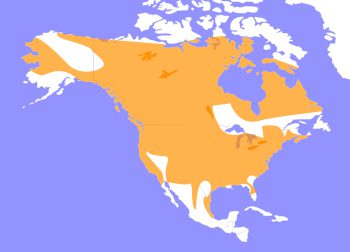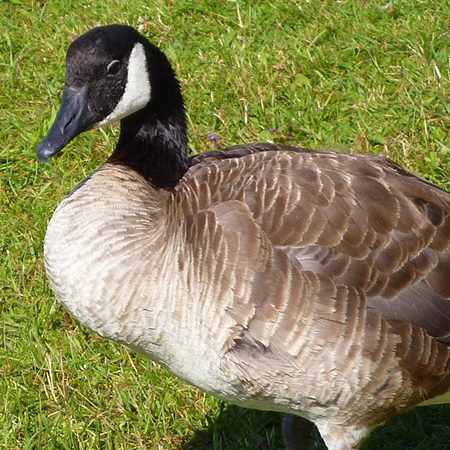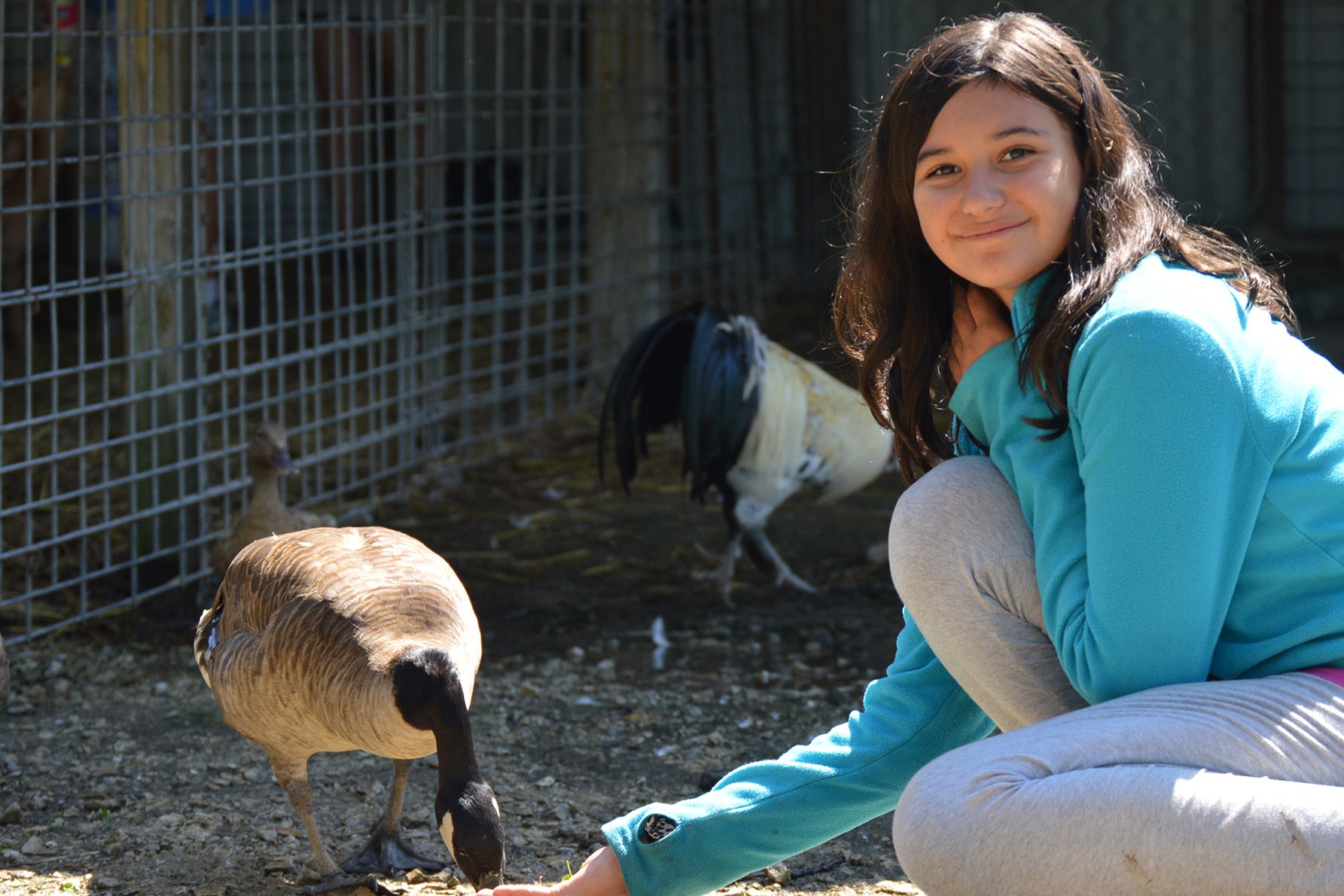Canadian Goose
Branta canadensis
The Canada goose is a large wild goose species with a black head and neck, white cheeks, white under its chin, and a brown body. They are native to arctic and temperate regions of North America, its migration occasionally reaches northern Europe. It has been introduced to parts of Europe and South America. Like most geese, the Canada goose is primarily herbivorous. It tends to be found close to fresh water, living in wetlands, ponds, rivers, and lakes. The black head and neck with a white "chinstrap" distinguish the Canada goose from all other goose species Canada geese range from 30 to 43 in in length and have a 50–73 in wingspan.
The male Canada goose usually weighs 5.7–14.3 lb, averaging amongst all subspecies 8.6 lb. The female looks virtually identical, but is slightly lighter at 5.3–12.1 lb, averaging amongst all subspecies 7.9 lb, and generally 10% smaller in linear dimensions than the male counterparts. It breeds in Canada and the northern United States in a wide range of habitats. The Great Lakes region maintains a very large population of Canada geese. Canada geese occur year-round in the southern part of their breeding range, including most of the eastern seaboard and the Pacific coast. Between California and South Carolina in the southern United States and northern Mexico, Canada geese are primarily present as migrants from further north during the winter.

Canadian Geese are native to North America, migrating across the United States and Canada. They’ve also been introduced in parts of northern Europe.
HABITAT -They live near freshwater, wetlands, ponds, rivers, and lakes. During migration season they go to warmer climates.
DIET -They are omnivorous, the majority of their diet is grass, and sometimes small insects and fish.
FUN FACT -Canada geese commonly form “gang broods,” groups of 20-100 geese.
SOCIAL BEHAVIOR -They are social animals, forming flocks during migration.
ACTIVITY -Canada geese regularly show diurnal tendencies, during migration they are sometimes nocturnal, flying at night.
PREDATORS -Predators include humans, coyotes, raccoons, skunks, bobcats, and foxes.
SIZE -They are 30 to 43 in in length and have a 50–73 in wingspan. Average weight is between 7.9 lb - 8.6 lbs.
RELATIVES -Relatives of the Canada goose include ducks, swans and other geese species.
CONSERVATION -Relatives of the Canada goose include ducks, swans and other geese species.
Cub Creek Animal Care Information
Housing - Loosy lives in our luxurious barn with many other bird species! During the days, she gets to roam around grazing the pastures in a Nursery outdoor enclosure. The birds will spend their time pecking around and scratching at the ground. In the evening they make their way back into the stalls filled with hay and shavings for bedding.
Diet - She is provided with a constant supply of game bird finisher feed, which provides her with all the nutrients she needs to be healthy. The enclosure also includes Nelson water bowls that continuously provide fresh water for our birds.
Enrichment - Living in a multi-species enclosure provides our birds with enrichment daily due to the constant interactions. During the summer, campers can make puzzle boxes out of cardboard to make finding food a bit more challenging.


